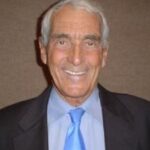Review of Silent Spring at 50: Reflections on an Environmental Classic, by Roger E. Meiners and Andrew P. Morriss (PERC, 2012), 32 pages
I have been writing about Rachel Carson’s infamous book Silent Spring for much of the 50 years since its publication. With ten years of environmental education behind me when the book was published in 1962, it was immediately obvious that this was not a work of science but rather a compilation of anecdotal data and selective scientific studies to make points that fit the author’s philosophy of how the earth should be. Ms. Carson has caused the deaths of more people by malaria as a result of the withdrawal of DDT than have been killed in all the wars and tyrannical leaders of the 20th century.
Now, two distinguished professors of law have studied every flawed paragraph in this book and the terrible impacts it has had on society, and have written a booklet available free to all from our friends at the Property and Environment Research Center in Bozeman, Montana, and later an entire book to be published in the fall by The Cato Institute. The booklet is called Silent Spring at 50: Reflections on an Environmental Classic.
You will never find a more informative and clearly written explanation of why Carson’s book became a bible of the environmental movement despite presenting almost no accurate facts.
Reputable Scientist Turned Activist
Carson was a marine biologist whose earlier publications on the oceans and marine life were fine works of nature writing. Her strong reputation built upon these earlier writings led many willing environmentalists to accept the countless distortions in Silent Spring as fact.
In Silent Spring (a title drawn from her assertion that the anti-malaria chemical DDT was causing bird deaths) Carson shifted from documenting nature’s beauty to advocating positions linked to a darker tradition in American environmental activist circles.
Meiners and Morriss put it bluntly: “above all, Silent Spring is a work of advocacy, weaving anecdotes and carefully selected bits of science into a compelling brief against the use of chemicals that had already saved millions of lives at the time Carson wrote.”
Bad Data, Rank Speculation
Carson used unsubstantiated data to argue pesticides increase cancer, and she touted animal studies where animals were unrealistically given chemicals in tens of thousands of times the concentrations that occur in the real world.
Carson began her book with what became one of its most famous passages, describing a town where there were no songbirds. At the end of this section, entitled “A Fable for Tomorrow,” Carson warned of what might happen if pesticide use were not curtailed. Meiners and Morriss assemble a litany of facts showing how fraudulently she presented her case.
Carson presented scare scenarios of pesticides killing birds, most notably bald eagles, while bird counts conducted by the Audubon Society documented that bird populations were in fact rising. Since Carson was an active member of her local chapter of the Audubon Society and served on its board of directors, she must have been aware of the Audubon bird counts.
Benefits Ignored
Meiners and Morriss explain that Silent Spring “ignored the benefits of pesticides for both human well being and the environment. These include reductions in habitat loss and biodiversity, lessened hunger, increased no-till farming, reduced erosion and agricultural runoff and more agricultural activity.”
I cannot convey the importance of this booklet and the forthcoming book better than environmental scientist Henry Miller of the Hoover Institution does on its back cover: “Meiners and Morriss offer a much needed perspective on one of the most misguided and over-praised books of the 20th century. However noble her intentions, in Silent Spring, Rachel Carson provided the impetus for a half century of environmental policies that have cost hundreds of millions of lives and elicited antagonism toward many products and technologies that could have benefitted the planet and its inhabitants.”
You can obtain your free copy of this booklet by sending a request to [email protected], writing to PERC at 2048 Analysis Drive, Suite A, Bozeman, MT 59718, or calling PERC at 406-587-9591.
Jay Lehr, Ph.D. ([email protected]) is science director of The Heartland Institute.





